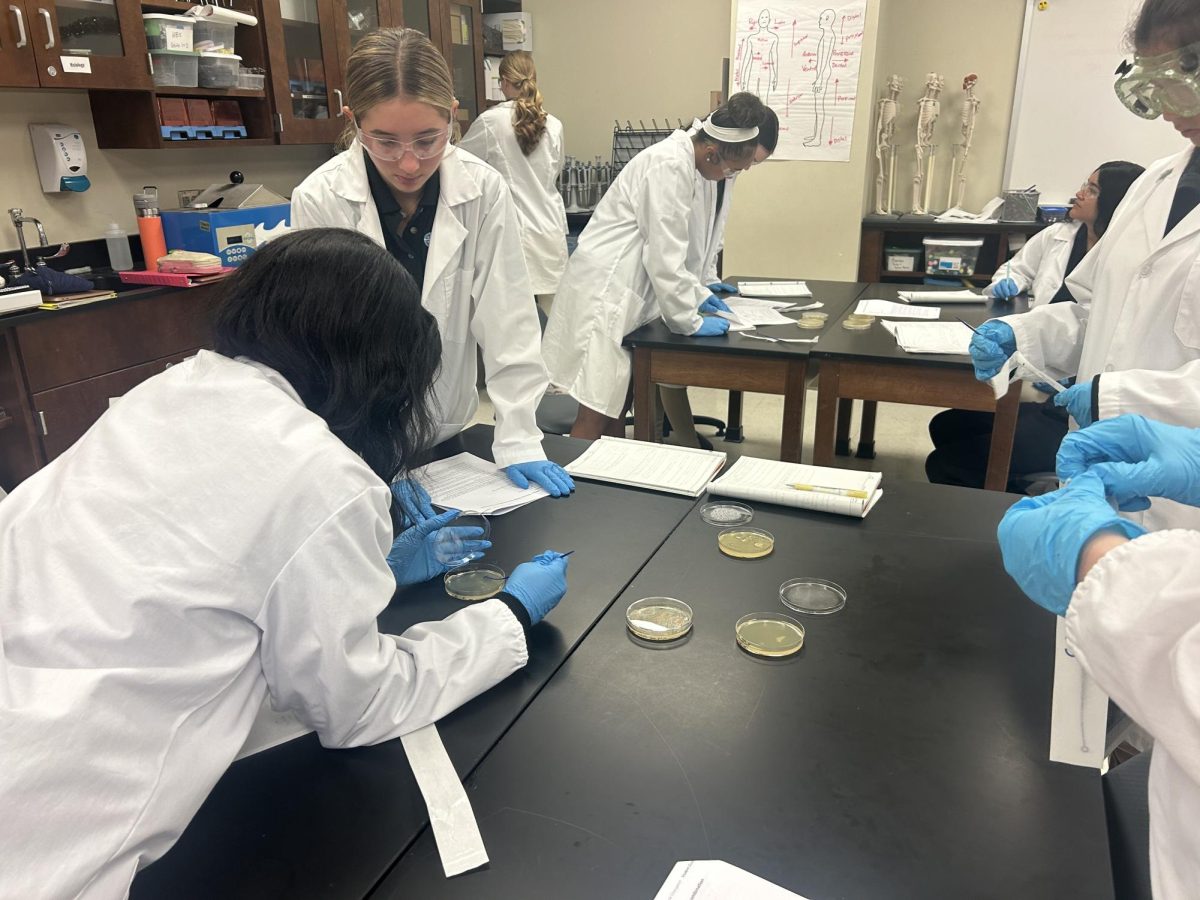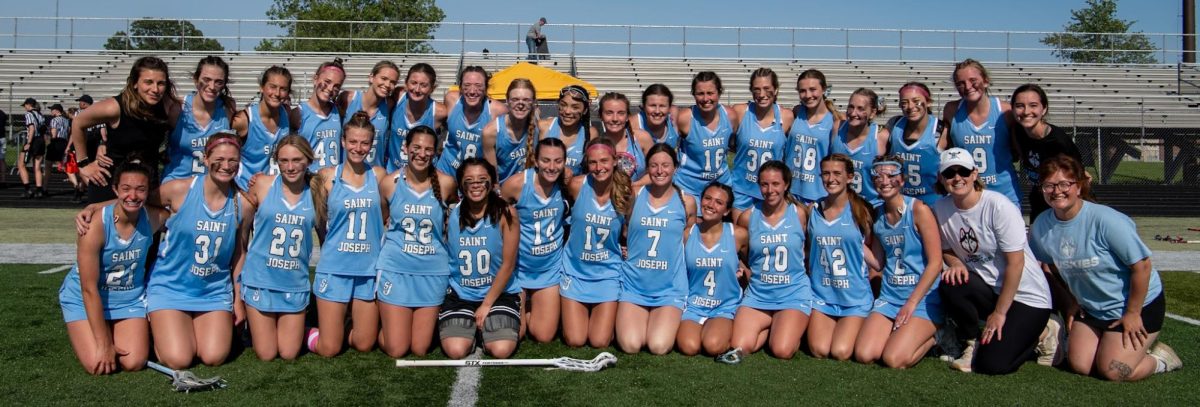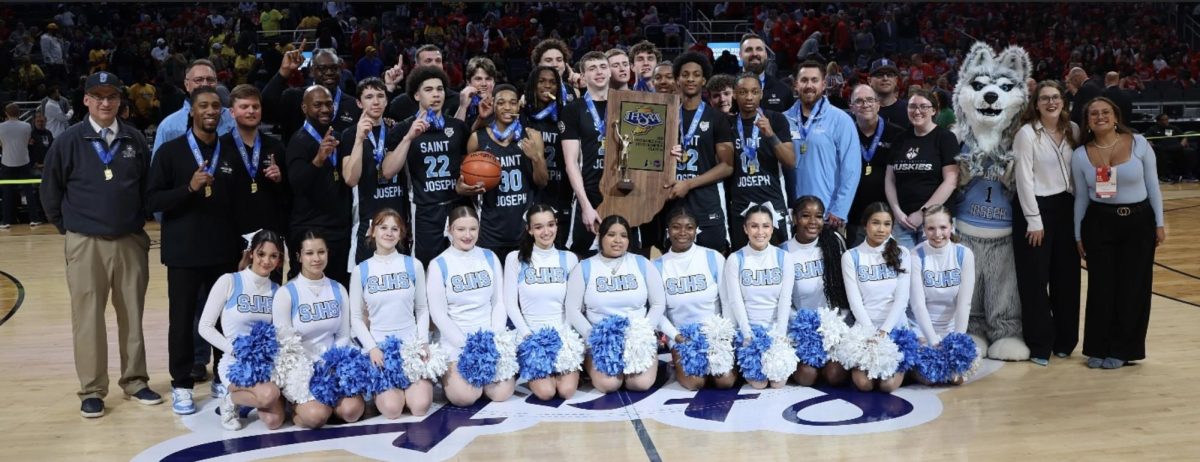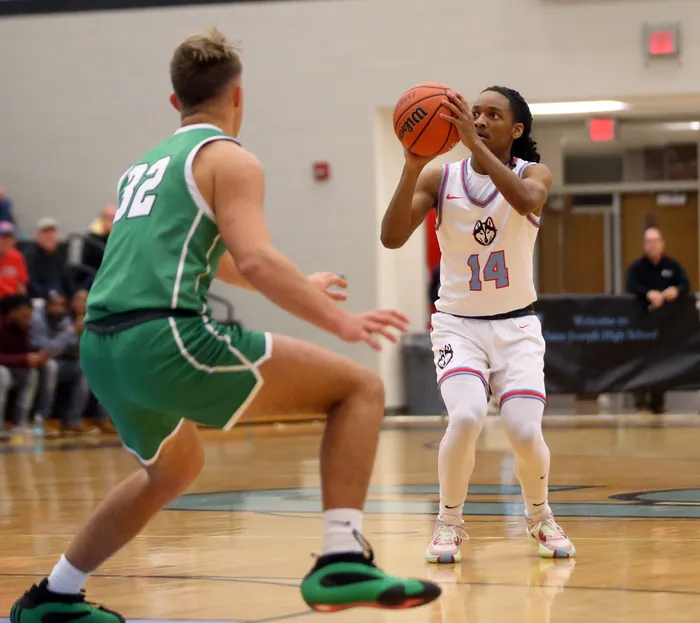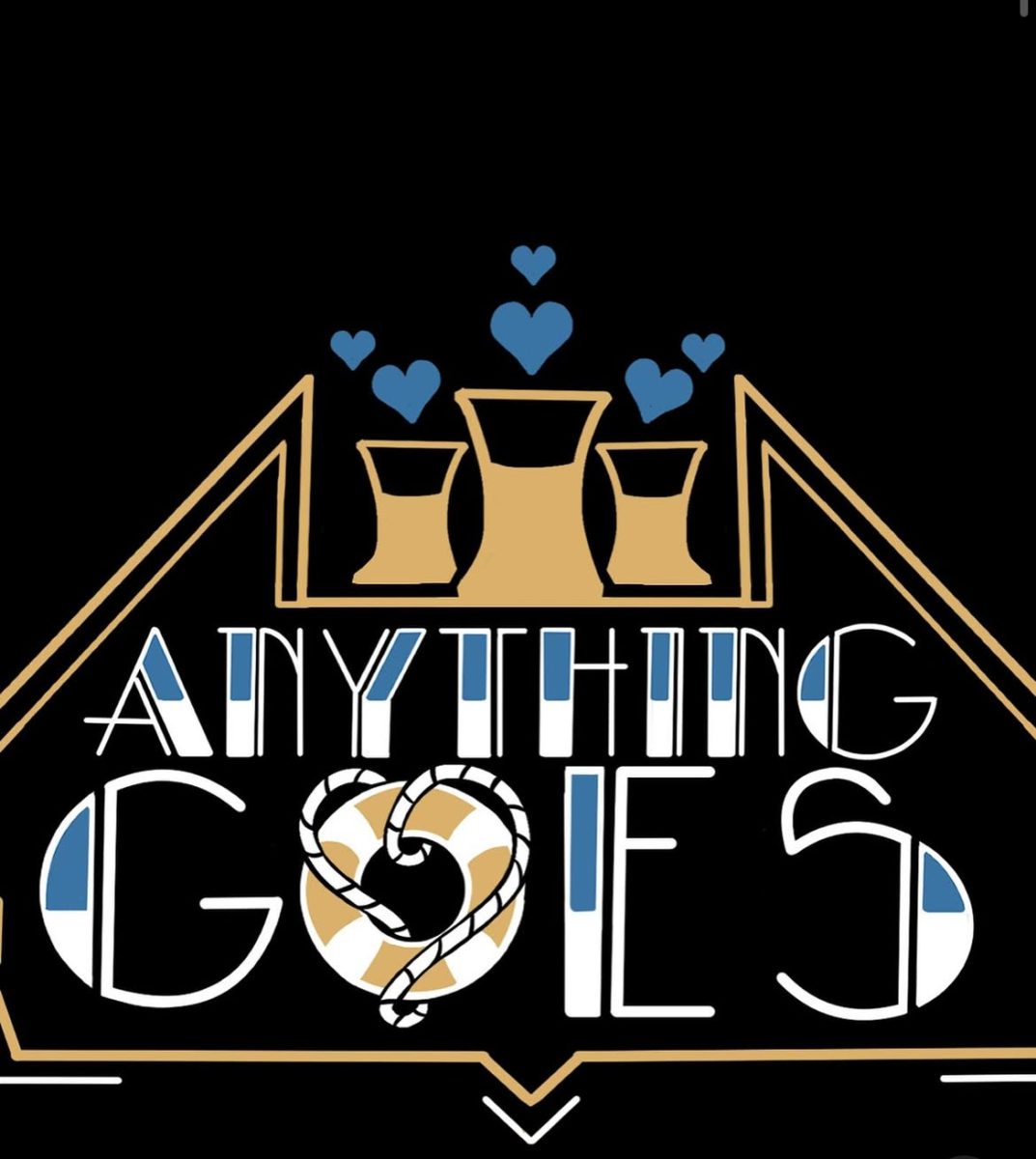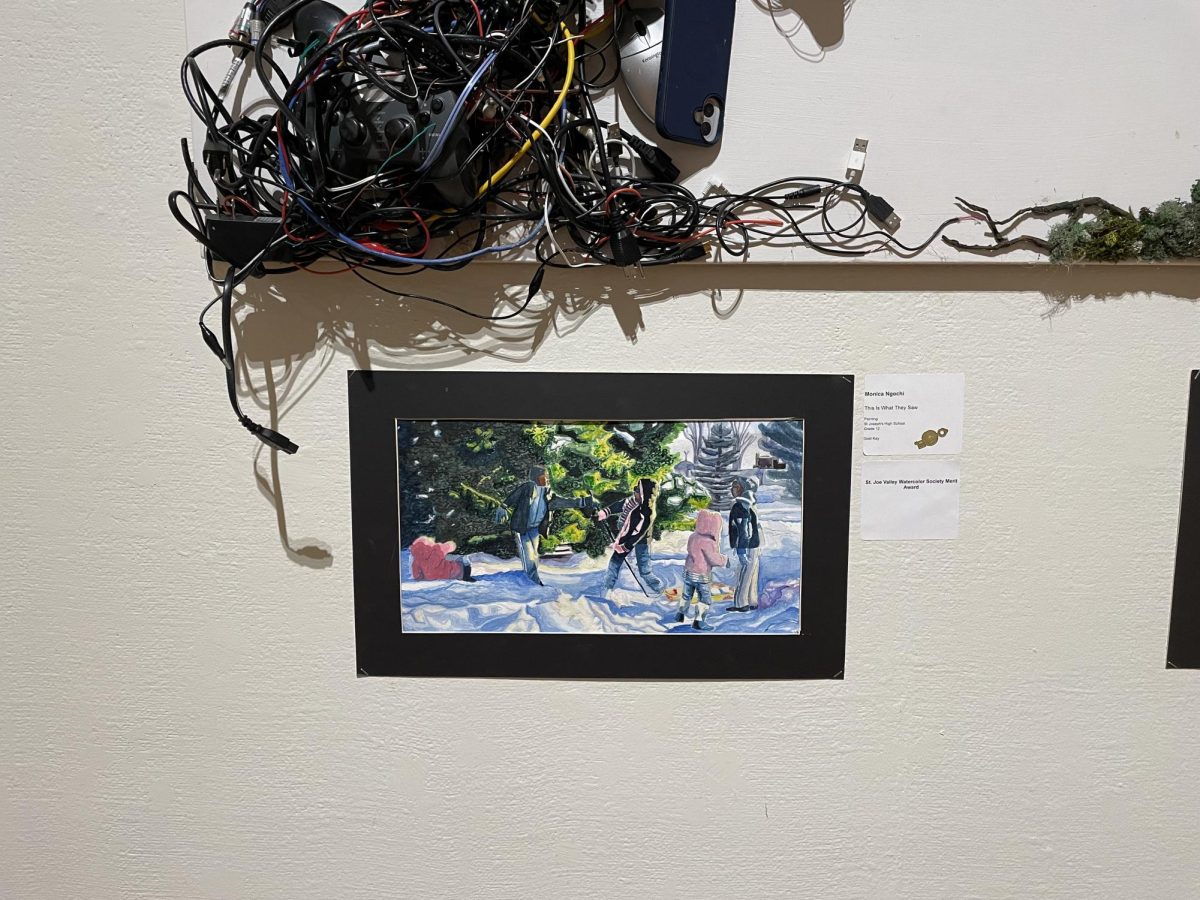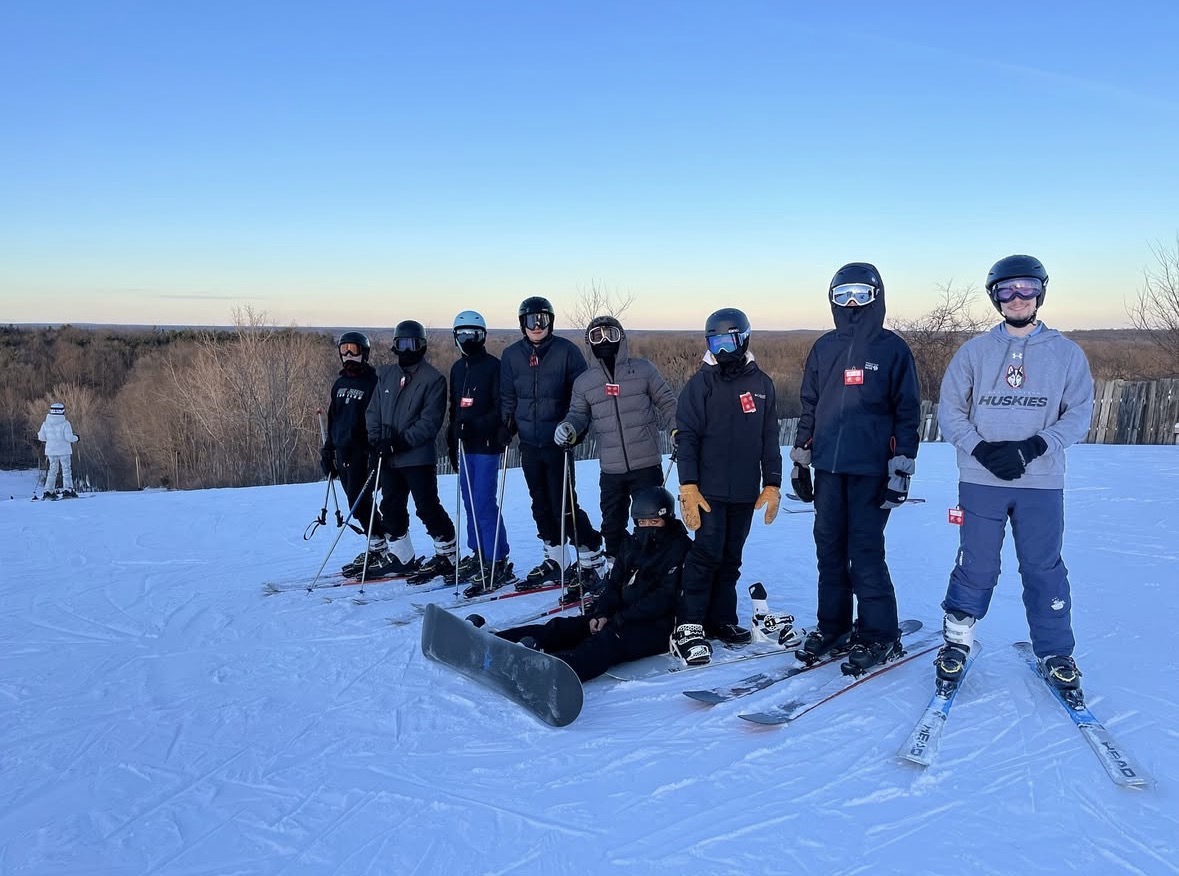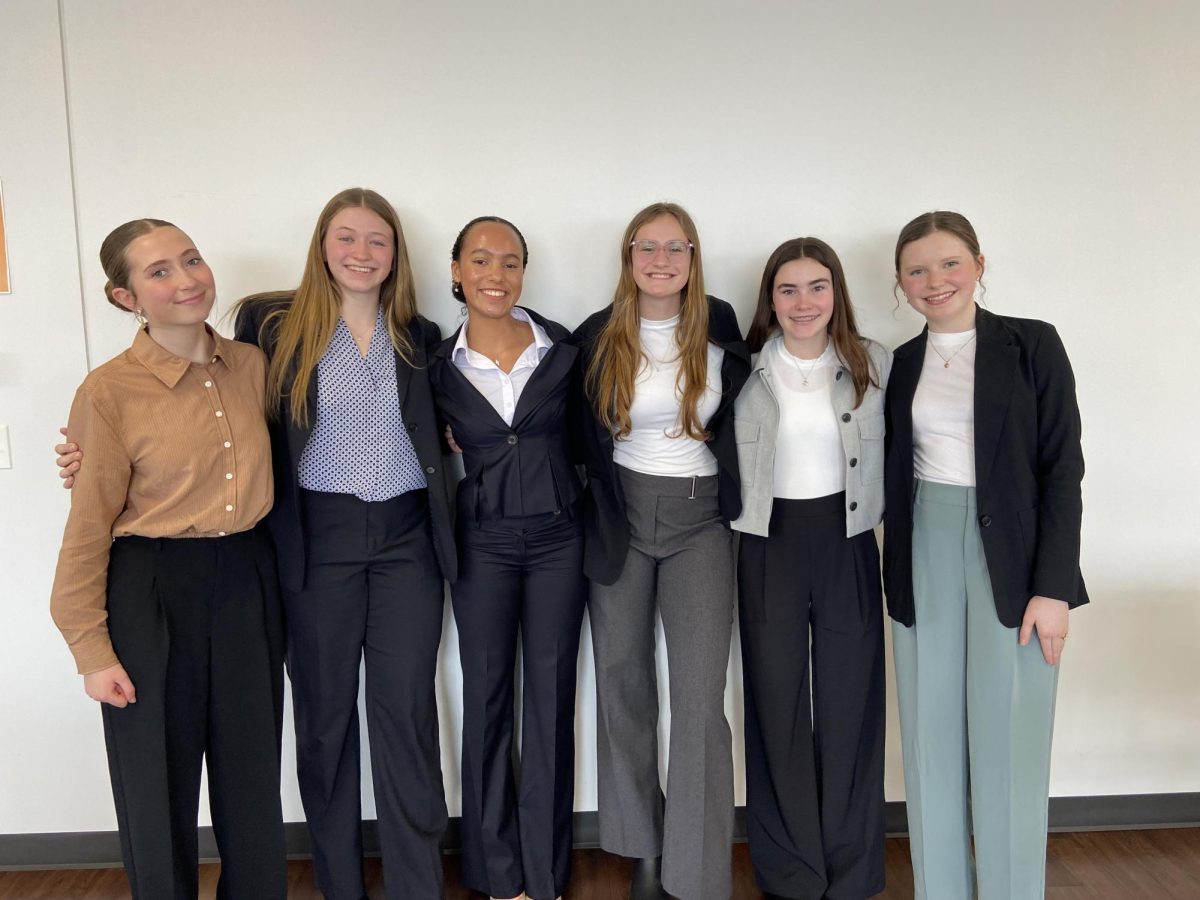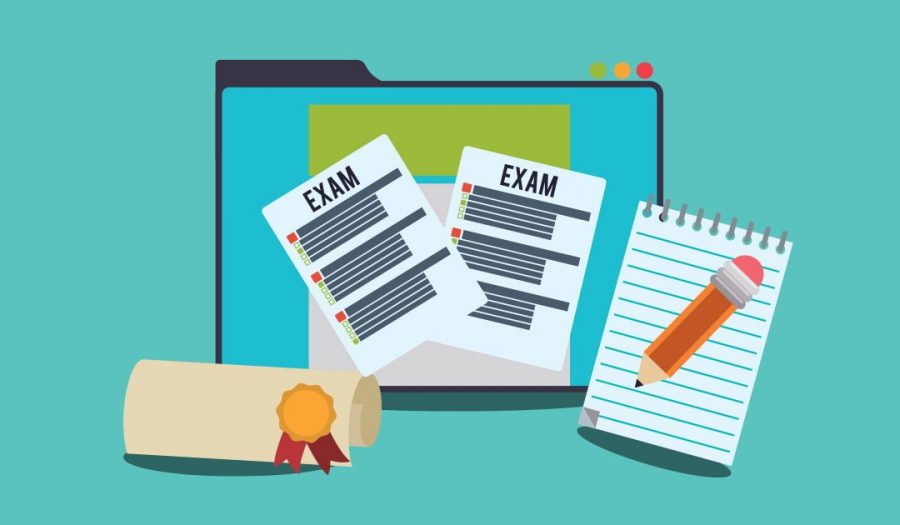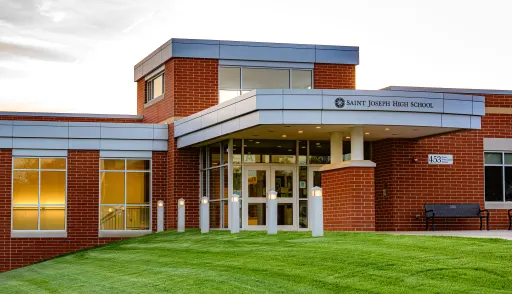Project Lead The Way is a learning initiative that offers students of all ages the opportunity to develop the skills needed for college and real-world careers. Saint Joe offers students all three of the PLTW tracks- biomedical sciences, engineering, and computer science. The biomedical track consists of 4 years- Principles of Biomedical Science, Human Body Systems, Medical Interventions, and Biomedical Intervention. Principles of Biomedical Science asks students to analyze data, control hypothetical outbreaks, and promote living a healthy life. The course hinges on the fictional death of the character Anna Garcia. Students in PBS develop necessary and on-demand skills they will need, should they go into the Biomedical field. Human Body Systems is the PLTW version of an anatomy class. HBS students experience real-world medical scenarios to see medicine in action. They’re instructed to diagnose and provide treatment to “patients” in a rehabilitation center, keep “clients” safe on medicine trips to remote locations, and work on research exploring aging and development. Medical Interventions students explore scenarios like designing a prosthetic arm and following the life of a fictional family to learn how to prevent, diagnose, and treat disease. Biomedical Innovations students use the knowledge they have gained through their past 3 years to innovate their own solution to the health problems of today. Here’s an inside look into the Project Lead the Way Biomedical Track.
“It can open doors,” says Principles of Biomedical Science teacher Mrs. Tracy Gergely. The Biomed track shows students things they will not encounter in traditional classrooms. The hands on problem solving experience is helpful in any workplace- not just jobs dealing with medical knowledge. The Biomedical track provides students with information and skills they will use in the medical and medical research field, yes, but it also teaches them vital skills for any career later in their life. “Biomed has taught me many workplace skills like communication with others, problem solving, adaptability, creativity, and teamwork,” says Human Body Systems student Stella Weller. “It offers many career options to pursue later in life and helps people develop on a personal level as well.” The Biomedical track’s classes are all very group-oriented. They require students to be able to work well with others in small and large groups. From reconstructing a crime scene in Principles of Biomedical Science, to replating real bacteria in Medical Interventions, group work and collaboration are a fundamental part of the Biomed experience. Any career a student plans to go into will require collaboration. There is no job in the world where a person will not interact with another. Project Lead The Way prepares its students for these situations- whether they plan to follow the specific career path their Track preps them for or not.
“There are students who surprise the teacher,” says Gergely. “Some kids will learn that ‘hey, maybe this is something I want to do’ and others will learn that this isn’t something for them.” Another student says, “I went into Biomed wanting to be a lawyer. Then over the course of the class, I learned that a desk job wasn’t what I wanted. I learned, with the help of Mrs. Gergely and the Principles of Biomedical Science class, that I want to go into veterinary medicine.” It is students like this that walk into the classroom one day, and discover- through hands-on experience and non-traditional class structure- what they really want to do in their life. The Principles of Biomedical Students receive their initial exposure to the Biomedical field with state of the art equipment and activities with minimal instruction- forcing the students to think critically about their situation and learn what to do and what not to do through trial and error.
This year’s Biomedical Sciences classes are already in full swing. The Principles of Biomedical Science classes have already seen their model crime scene and their investigation is underway. Recently, the students completed their “blood drop” lab, in which they used pipettes to drop fake blood from different heights and angles in order to analyze what conditions create different kinds of blood spatter. Human Body Systems students recently dissected a cow’s elbow and will use it as a model for a human’s in their upcoming lessons. The Medical Interventions students completed a lab in which they plated cultures of bacteria and allowed them to grow, and then took samples from the cultures and plated them onto petri dishes treated with different antibiotics in order to learn which antibiotics work best against bacteria. The Biomedical Innovations students are currently testing water for bacteria in order to investigate what is making their fictional family sick.

